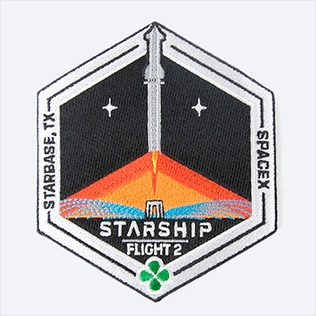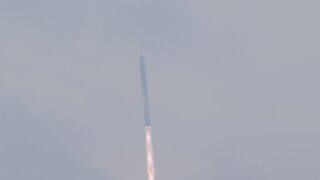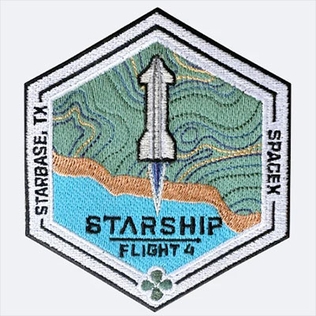Related Research Articles

NASASpaceflight, often referred to as NSF, is a private aerospace news organization, which operates a YouTube channel, website, and forum, which launched in 2005, as well as various social media channels covering crewed and uncrewed spaceflight and aerospace engineering news.

Launch vehicle system tests assess the readiness of a launch system to safely reach orbit. Launch vehicles undergo system tests before they launch. Wet dress rehearsals (WDR) and more extensive static fire tests prepare fully assembled launch vehicles and their associated ground support equipment (GSE) prior to launch. The spacecraft/payload may or may not be attached to the launch vehicle during the WDR or static fire, but sufficient elements of the rocket and all relevant ground support equipment are in place to help verify that the rocket is ready for flight.

SpaceX has privately funded the development of orbital launch systems that can be reused many times, similar to the reusability of aircraft. SpaceX has developed technologies since the 2010s to facilitate full and rapid reuse of space launch vehicles. The project's long-term objectives include returning a launch vehicle first stage to the launch site within minutes and to return a second stage to the launch pad, following orbital realignment with the launch site and atmospheric reentry in up to 24 hours. SpaceX's long term goal would have been reusability of both stages of their orbital launch vehicle, and the first stage would be designed to allow reuse a few hours after return. Development of reusable second stages for Falcon 9 was later abandoned in favor of developing Starship. However, SpaceX still developed reusable payload fairings for the Falcon 9.

SpaceX Starbase—previously, SpaceX South Texas Launch Site and SpaceX private launch site—is an industrial complex and rocket launch facility that serves as the main testing and production location for Starship launch vehicles, as well as the headquarters of the American aerospace manufacturer SpaceX. Located at Boca Chica, near Brownsville, Texas, United States, and adjacent to South Padre Island, Texas, Starbase has been under near-continuous development since the late 2010s, and comprises a spaceport near the Gulf of Mexico, a production facility at Boca Chica Village, and a test site along Texas State Highway 4.

Starship is a two-stage fully reusable super heavy-lift launch vehicle under development by American aerospace company SpaceX. On April 20, 2023, with the first Integrated Flight Test, Starship became the most massive, tallest, and most powerful vehicle ever to fly. SpaceX has developed Starship with the intention of lowering launch costs using economies of scale, aiming to achieve this by reusing both rocket stages by "catching" them with the launch tower's systems, increasing payload mass to orbit, increasing launch frequency, mass-manufacturing the rockets and adapting it to a wide range of space missions. Starship is the latest project in SpaceX's reusable launch system development program and plan to colonize Mars.

Raptor is a family of rocket engines developed and manufactured by SpaceX. It is the third rocket engine in history designed with a full-flow staged combustion (FFSC) fuel cycle, and the first such engine to power a vehicle in flight. The engine is powered by cryogenic liquid methane and liquid oxygen, a mixture known as methalox.
Boca Chica is an area on the eastern portion of a subdelta peninsula of Cameron County, at the far south of the US State of Texas along the Gulf Coast. It is bordered by the Brownsville Ship Channel to the north, the Rio Grande and Mexico to the south, and the Gulf of Mexico to the east. The area extends about 25 miles (40 km) east of the city of Brownsville. The peninsula is served by Texas State Highway 4—also known as the Boca Chica Highway, or Boca Chica Boulevard within Brownsville city limits—which runs east–west, terminating at the Gulf and Boca Chica Beach.

Starship flight test 1 was the maiden flight of the integrated SpaceX Starship launch vehicle. SpaceX performed the flight test on April 20, 2023. The prototype vehicle was destroyed less than four minutes after lifting off from the SpaceX Starbase in Boca Chica, Texas. The vehicle became the most powerful rocket ever flown, breaking the half-century-old record held by the Soviet Union's N1 rocket. The launch was the first "integrated flight test," meaning it was the first time that the Super Heavy booster and the Starship spacecraft flew together as a fully integrated Starship launch vehicle.

Super Heavy is the reusable first stage of the SpaceX Starship super heavy-lift launch vehicle, which it composes in combination with the Starship second stage. As a part of SpaceX's Mars colonization program, the booster evolved into its current design over a decade. Production began in 2021, with the first flight being conducted on April 20, 2023, during the first launch attempt of the Starship rocket.

Starship is a spacecraft and second stage under development by American aerospace company SpaceX. Stacked atop its booster, the Super Heavy, the pair compose SpaceX's new super heavy-lift space vehicle, also called Starship. The spacecraft is designed to transport both crew and cargo to a variety of destinations, including Earth orbit, the Moon, and Mars. It's designed to be reusable and capable of landing propulsively by firing its engines to perform a controlled descent in the arms of a tower on Earth or with landing legs on other planetary bodies. It is intended to enable long duration interplanetary flights with a crew of up to 100 people. It will also be capable of point-to-point transport on Earth, enabling travel to anywhere in the world in less than an hour. Furthermore, it will be used to refuel other Starship spacecraft, enabling them to reach higher orbits and other space destinations. Elon Musk, the CEO of SpaceX, estimated in a tweet that eight launches would be needed to completely refuel a Starship in low Earth orbit, enabling it to travel onwards.

Starship flight test 2 was the second flight test of the SpaceX Starship launch vehicle. SpaceX performed the flight test on November 18, 2023. The mission's primary objectives were for the vehicle to hot stage—a new addition to Starship's flight profile—followed by the second stage attaining a near-orbital trajectory with a controlled reentry over the Pacific Ocean, while the booster does a boostback burn with a propulsive splashdown in the Gulf of Mexico.

Starship flight test 3 was the third flight test of the SpaceX Starship launch vehicle. SpaceX performed the flight test on March 14, 2024.

Starship flight test 4 was the fourth flight test of the SpaceX Starship launch vehicle. The prototype vehicles flown were the Starship Ship 29 upper-stage and Super Heavy Booster 11. SpaceX performed the flight test on June 6, 2024.

Starship flight test 5 was the fifth flight test of a SpaceX Starship launch vehicle. The prototype vehicles flown were the Starship Ship 30 upper-stage and Super Heavy Booster 12.

Starship flight test 6 was the sixth flight test of a SpaceX Starship launch vehicle. The prototype vehicles flown were the Ship 31 upper stage and first stage Booster 13. The flight test started on November 19, 2024, at 22:00:00 UTC.
References
- ↑ "An Air Traffic Data Exchange Network for the Caribbean region has published an advisory indicating Starship Flight 7's launch date is Jan 10th in a window from 4 pm - 5:37 pm local. We'll need to see it on FAA notices to firm it up more". X (formerly Twitter). December 27, 2024. Retrieved December 27, 2024.
- ↑ "An Air Traffic Data Exchange Network for the Caribbean region has published an advisory indicating Starship Flight 7's launch date is Jan 10th in a window from 4 pm - 5:37 pm local. We'll need to see it on FAA notices to firm it up more". X (formerly Twitter). December 27, 2024. Retrieved December 27, 2024.
- ↑ Weber, Ryan (December 19, 2024). "FAA gives Flight 7 the Go Ahead, SpaceX to complete final steps ahead of launch". NASASpaceFlight.com. Retrieved December 19, 2024.
- ↑ McCrea, Aaron (July 31, 2024). "Successful Static Fire Leads to Final Preparation Before Full Stack". NASASpaceflight . Retrieved September 25, 2024.
- ↑ New Starship Block 2 Cryo Proof Tested. NASASpaceflight . October 31, 2024. Retrieved November 12, 2024– via YouTube.
- ↑ House, Marcus (October 5, 2024). Good or bad news for Starship Flight 5?, SpaceX Ground Themselves!?, and Vulcan Flight 2 Success! . Retrieved October 5, 2024– via YouTube.
- ↑ Bergin, Chris (October 9, 2024). "Starship readying for Flight 5 amid future preparations". NASASpaceflight . Retrieved October 9, 2024.
- ↑ SpaceX Tests Booster 14 – Spin Prime. NASASpaceflight . December 7, 2024. Retrieved December 8, 2024– via YouTube.
- ↑ Weber, Ryan (December 10, 2024). "Ship 33 prepares for engine testing, Booster 14 Completes Static Fire". NASASpaceFlight.com. Retrieved December 10, 2024.
- ↑ NASASpaceflight (December 14, 2024). Ship 33 Test Campaign Begins | SpaceX Boca Chica . Retrieved December 14, 2024– via YouTube.
- ↑ SpaceX’s Starship Prepares for Flight 7: Testing & Expansion at Starbase. NASASpaceflight . December 16, 2024. Retrieved December 16, 2024– via YouTube.
- ↑ "FAA Registry (N95NA)". Federal Aviation Administration.
- 1 2 McCrea, Aaron (November 27, 2024). "Starbase continues its rapid pace of advancement after Starship Flight 6". NASASpaceFlight.com. Retrieved November 28, 2024.